Human Orbital Spaceflights
![]()
International Flight No. 106STS-51IDiscovery (6)20th Space Shuttle missionUSA |
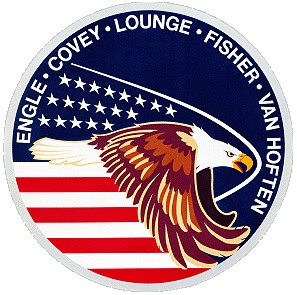 |
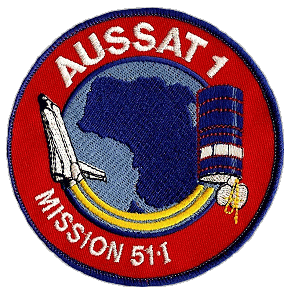 |
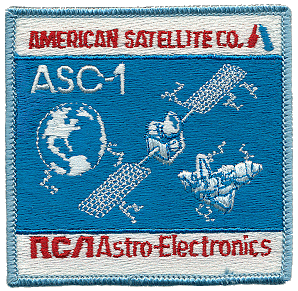 |
||
![]()
Launch, orbit and landing data
walkout photo |
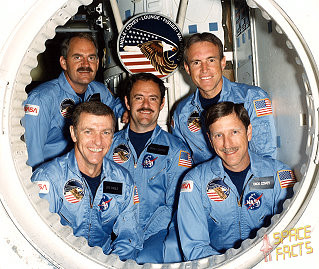 |
||||||||||||||||||||||||||||
alternative crew photo |
|||||||||||||||||||||||||||||
alternative crew photo |
|||||||||||||||||||||||||||||
alternative crew photo |
Crew
| No. | Surname | Given names | Position | Flight No. | Duration | Orbits | |
| 1 | Engle | Joe Henry | CDR | 2 | 7d 02h 17m 42s | 112 | |
| 2 | Covey | Richard Oswalt | PLT | 1 | 7d 02h 17m 42s | 112 | |
| 3 | van Hoften | James Dougal Adrianus "Ox" | MS-1, EV-1 | 2 | 7d 02h 17m 42s | 112 | |
| 4 | Lounge | John Michael | MS-2, RMS, FE | 1 | 7d 02h 17m 42s | 112 | |
| 5 | Fisher | William Frederick | MS-3, EV-2 | 1 | 7d 02h 17m 42s | 112 |
Crew seating arrangement
|
 |
|
||||||||||||||||||||||||
Hardware
| Orbiter : | OV-103 (6.) |
| SSME (1 / 2 / 3): | 2109 (8.) / 2018 (7.) / 2012 (10.) |
| SRB: | BI-020 |
| ET: | ET-21 (LWT-14) |
| OMS Pod: | Left Pod 04 (2.) / Right Pod 03 (6.) |
| FWD RCS Pod: | FRC 3 (6.) |
| RMS: | 301 (6.) |
| EMU: | EMU No. 1067 (PLSS No. 1006) / EMU No. 1066 (PLSS No. 1003) / EMU No. 1068 (PLSS No. 1009) |
Flight
|
Launch from Cape Canaveral (KSC) and
landing on the Edwards
AFB, Runway
23. Two earlier launch attempts, one on August 24, 1985 and another on August 25, 1985, were scrubbed - the first because of poor weather, and the second because the backup orbiter computer failed and had to be replaced. Highlights of the mission included the second repair of a satellite in space and deployment of the ASC-1/PAM-D for American Satellite Co., the AUSSAT-1/PAM-D satellite for the Australian government, and the Syncom IV-4/Leasat-4 satellite for the U.S. Navy. The Physical Vapor Transport of Organic Solids (PVTOS) experiment, sponsored by the 3M Corp., was conducted in Discovery's middeck. The crew deployed the communications satellites AUSSAT-1 (Australia), ASC-1 (USA) on flight day one and Syncom IV-4/Leasat-4 (US Navy) on flight day three. All three achieved their planned geosynchronous orbits and became operational. AUSSAT, the Australian national satellite communications system, provided a wide range of domestic services to the entire continent and its offshore islands. This included direct television broadcast to homesteads and remote communities, high quality television relays between major cities, digital data transmission for both telecommunications and business use, voice applications for urban and remote areas, centralized air traffic control services and maritime radio coverage. AUSSAT-l was the first in a system of three to be operated by Australia's national satellite company, AUSSAT Proprietary Ltd. AUSSAT-l used two telescoping cylindrical solar panels and a folding antenna for compactness during launch. After the satellite nears its orbital position, the antenna erects and the outer solar panel deploys, exposing the inner solar array. The AUSSAT satellite carried 15 channels, each 45 MHz wide. Four were use high power, 30-watt traveling wave tube amplifiers (TWTAs) to provide radio and television services to Australia's remote areas. The remaining 11 channels operated with 12-watt TWTAs. It was possible to connect the communications channels individually to the transmit beams by ground command. This arrangement provided traffic flexibility for the system. The satellite's diameter was nearly 7.2 feet (2.19 meters). Stowed for launch its height was 9.2 ft. (2.80 meters). In orbit, with antennas deployed and aft solar panel extended, the height increased to 21.6 m. Its initial on-station weight was about 1,322 pounds (599 kg). AUSSAT-l, a Hughes 376 model, was deployed by John Lounge on flight day 1 - a day earlier than planned. The satellite had 11 12-watt transponders and four 30-watt transponders to provide domestic communications to Australia's 15 million population and to improve air traffic control services. About 45 minutes after deployment, the first stage rocket will fire and on the fourth apogee, the apogee kick motor was fired by ground controllers in Sydney, Australia, where mission events were conducted from that point on. ASC-l was the first wholly-owned commercial communications satellite in a system consisting of two operational spacecraft and one ground spare. ASC's satellites operated in both the 6/4 GHz (C-band) and 14/12 GHz (Ku-band) frequencies. The two hybrid satellites, with life expectancies of 10 years, have been assigned orbital locations at 81 degrees and 128 degrees W. longitude. There were both 36 and 72 MHz bandwidth transponders onboard the spacecraft. The total radio frequency power was approximately 300 watts. The 36 MHz C-band transponders used 8.5-watt solid-state power amplifiers. These solid-state amplifiers provided improved linearity characteristics which permitted more carriers per transponder due to a marked reduction in intermodulation noise power. A unique feature of ASC's satellites was their encrypted command links, a security feature which guards against unauthorized access to the satellite command system. ASC-l and -2 were the first commercial spacecraft to have their command links protected by encryption. The cube-shaped ASC-l measured 4.3 by 5.3 by 10.5 ft. (1.31 by 1.61 by 3.20 meters) in the Shuttle cargo bay. With the solar panels deployed on orbit, the length increased to 46.5 ft. (14.17 meters) tip to tip. Weight of the satellite as it arrived on station was 1,482 lb. (672 kg). After deployment by William Fisher, the PAM-D fired and placed the spacecraft into a synchronous transfer orbit. ASC's Star-30 apogee kick motor was fired at the appropriate time to circularize the orbit at 22,300 statute miles (38,888 km). Leasat 4, also known as Syncom IV-4, was the fourth satellite in the Leasat system, which was leased by the Department of Defense to replace the older FleetSatcom spacecraft for worldwide UHF communications between ships, planes and fixed facilities. A Hughes HS 381 design, the Leasat spacecraft was designed expressly for launch from the Space Shuttle and uses the unique Frisbee, or rollout, method of deployment. The first two spacecraft were deployed during the STS-41D and STS-51A Shuttle missions. Leasat 3 was deployed successfully during mission STS-51D but failed to activate itself. The satellite was drifting in low Earth orbit without command and telemetry capability and a salvage operation was scheduled for flight day 7 of mission STS-51I. Interface between the spacecraft and the payload bay was accomplished with a cradle structure. The cradle permitted the spacecraft to be installed, lying on its side, with its retracted antennas pointing toward the nose of the orbiter and its propulsion system pointing toward the back. Mounting the antennas on deployable structures allowed them to be stowed for launch. Five trunnions (four longeron and one keel) are used to attach the cradle to the Shuttle. Five similarly-located internal attach points were used to attach the spacecraft to the cradle. Another unique feature of the Leasat series of satellites was no requirement for a separately-purchased upper stage, as had all the other communications satellites launched to date from the Shuttle. The Leasat satellites contained their own unique upper stage to transfer them from the Shuttle deploy orbit of about 182 mi. (292.9 km) to a circular orbit 22,300 mi. (38,888 km) over the equator. Each satellite was 20 ft. (6.09 meters) long with UHF and omnidirectional antennas deployed. Total payload weight in the Shuttle was 17,000 lb. (7,711 kg). The satellite's weight on station at the beginning of its planned 7-year life was nearly 3,060 lb. (1,387 kg). Hughes' Space and Communications Group builds the satellites. Ejection of the spacecraft from the Shuttle was initiated by James van Hoften when locking pins at the four contact points are retracted. An explosive device then released a spring that ejects the space-craft in a "Frisbee" motion. This gave the satellite its separation velocity and gyroscopic stability during the 45-minute coast period between deployment and ignition of the perigee kick motor. The satellite separated from the Shuttle at a velocity of about 1.5 feet (0.46 meter) per second and a spin rate of about 2 rpm. Flight day 4 included more phasing maneuvers to intercept the Leasat 3 spacecraft. Mission specialists James van Hoften and William Fisher began preparing the EVA equipment including checkout of the extravehicular mobility units (EMU) and manned maneuvering units on the fifth flight day. EVAs by William Fisher and James van Hoften were performed on August 31, 1985 (7h 20m) and September 01, 1985 (4h 26m). They captured satellite Syncom IV-3/Leasat-3 in space, repaired it, and deployed the satellite again. During the salvage operation, modifications were made to the satellite to permit ground command of the activation sequence. Modifications made during the rendezvous bypassed all hardware likely to have been the cause of the failure. While the first spacewalk once secured to the end of the Shuttle's 50-foot (15.25 meters) robot arm, James van Hoften should pluck Leasat out of space with a special device and present it to William Fisher. William Fisher secured at a work station in Discovery's payload bay and should the satellite's separation lever to the safe position. This was the NASA schedule. Using the Grapple Bar James van Hoften failed to stop the satellites rotation. With the Capture Bar he had success. John Lounge at the controls of the RMS moved the combination astronaut-satellite to the payload bay. William Fisher grappled the spacecraft with a special handling bar and continued holding it until James van Hoften was in position to take over control with the robot arm. William Fisher began performing the mechanical repair work to various parts of the spacecraft including installation of the ground control electronics box, a unit that should deploy the omni antenna, and he verified that power is on the spacecraft. The effort was slowed by a problem in the Remote Manipulator System elbow joint. For that reason, a second spacewalk was needed to finish the repair work. Finally, the omni antenna deployed as planned. After the salvage was complete, William Fisher stabilized Leasat and James van Hoften installed the spin-up bar on the spacecraft. Discovery and the repaired Leasat 3 was maneuvered to the deploy attitude. James van Hoften began the deploy by lifting the seemingly weightless spacecraft with a spin-up bar to start a rotation of about 8/10 rpm. Commander Joe Engle was carefully station keeping the Discovery with the Leasat and James van Hoften continued applying impulses until the spacecraft reaches 2 rpm. At that point, James van Hoften separated the spin-up bar from the spacecraft and it turned over to Hughes for normal operation. Physical Vapor Transport of Organic Solids (PVTOS) was 3M's second microgravity-based scientific experiment to fly aboard the Shuttle. The first was the Diffusive Mixing of Organic Solutions (DMOS), which flew on mission STS-51A in November 1984. PVTOS consisted of nine independent experimental cells housed in an Experimental Apparatus Container which were mounted on the aft bulkhead in the middeck area. The cells were arranged on a circular baseplate which fits into the NASA-supplied container. The container was backfilled with nitrogen to provide a safe, inert atmosphere for the experiment. The nine PVTOS experimental cells were about 12 inches (30.5 centimeters) long and 3 inches (7.6 centimeters) in diameter. Each cell housed a vacuum-insulated, glass and stainless steel ampoule which contained an organic solid at one end and a temperature-controlled substrate at the other end. The solid was vaporized by being heated and migrated through a buffer gas to the substrate which consisted of a special metal film previously deposited onto a laser-cut, polished silicon wafer. Vapors condense on the temperature-controlled substrate at the cooler end of the ampoule to form an organic thin film. The nine cells were activated two at a time during the flight. The ampoules were designed to operate at up to 400 degrees Centigrade but vacuum insulation around each limits the surface temperature of the cell from 55 to 60 degrees C. Maximum duration of each cell heating was about four hours. Precise temperatures and durations depend upon the organic materials used. The container with nine PVTOS cells and the GEM computer weighed a total of 165 pounds. The experiment was powered by a 28-volt, direct-current connection to the orbiter. GEM drew 70 watts of power throughout the flight. The container drew 50 to 60 watts for the 30-minute heat-up phase for each cell and 20 watts during the duration of each experiment. |
EVA data
| Name | Start | End | Duration | Mission | Airlock | Suit | |
| EVA | van Hoften, James | 31.08.1985, 12:1? UTC | 31.08.1985, 19:1? UTC | 7h 20m | STS-51I | Discovery | EMU No. 1067 |
| EVA | Fisher, William | 31.08.1985, 12:1? UTC | 31.08.1985, 19:1? UTC | 7h 20m | STS-51I | Discovery | EMU No. 1066 |
| EVA | van Hoften, James | 01.09.1985, 12:1? UTC | 01.09.1985, 16:3? UTC | 4h 26m | STS-51I | Discovery | EMU No. 1067 |
| EVA | Fisher, William | 01.09.1985, 12:1? UTC | 01.09.1985, 16:3? UTC | 4h 26m | STS-51I | Discovery | EMU No. 1066 |
Photos / Graphics
 |
 |
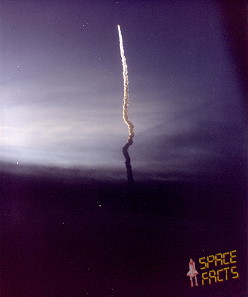 |
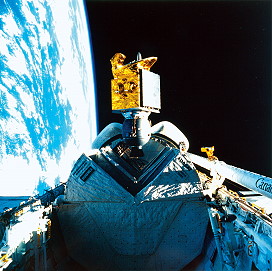 |
 |
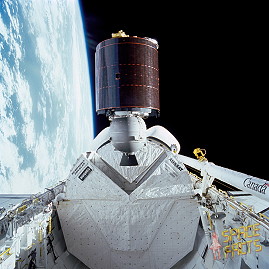 |
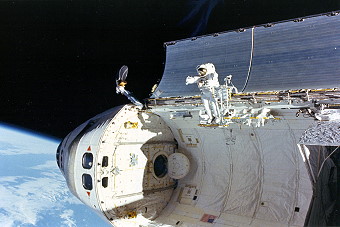 |
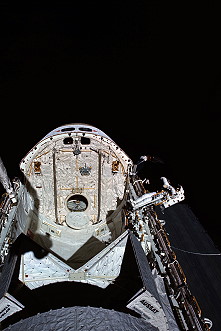 |
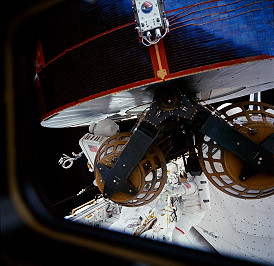 |
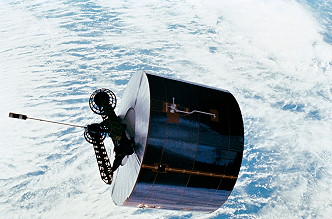 |
 |
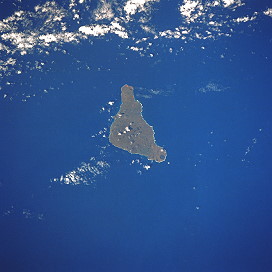 |
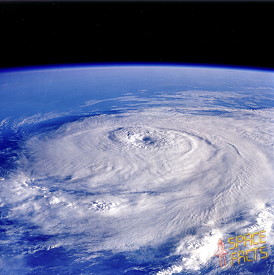 |
 |
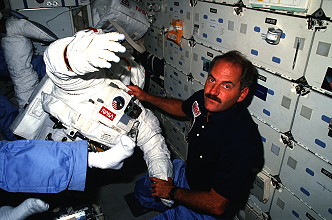 |
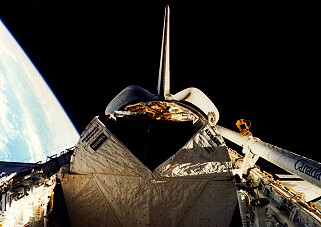 |
 |
 |
more EVA photos |
|
| © |  |
Last update on July 10, 2024.  |
 |